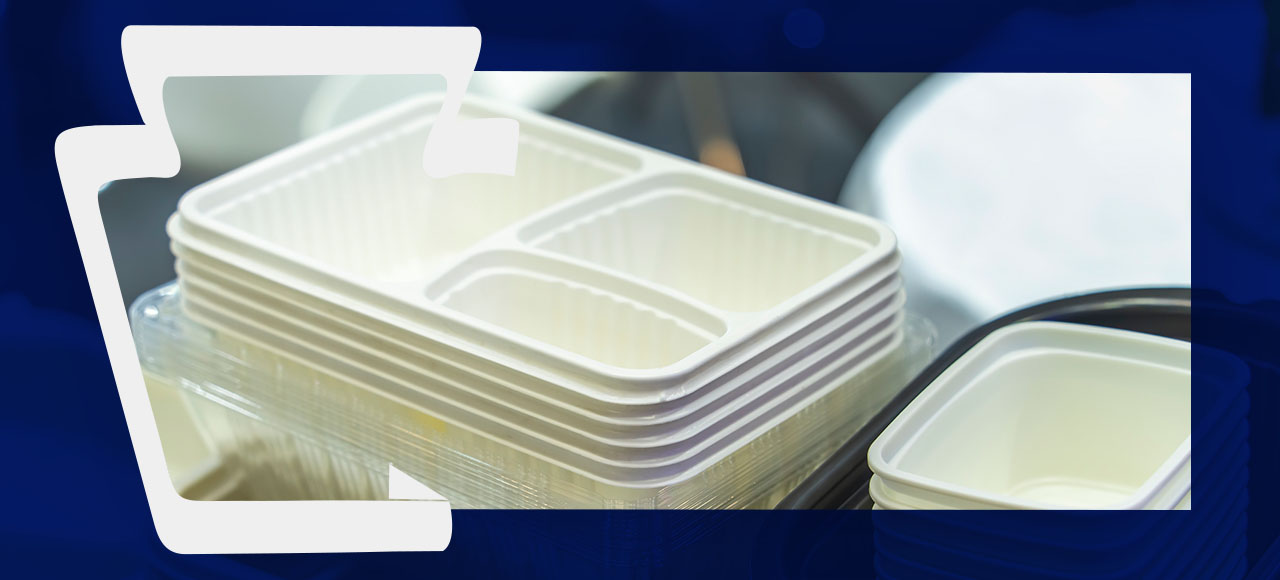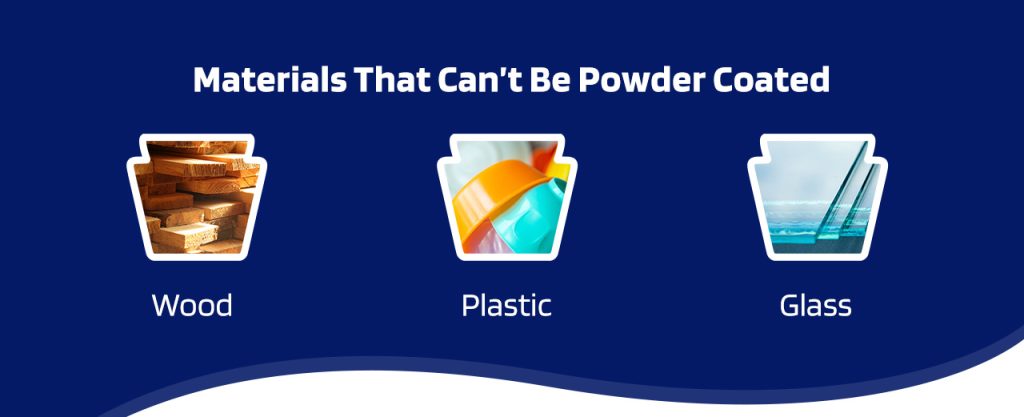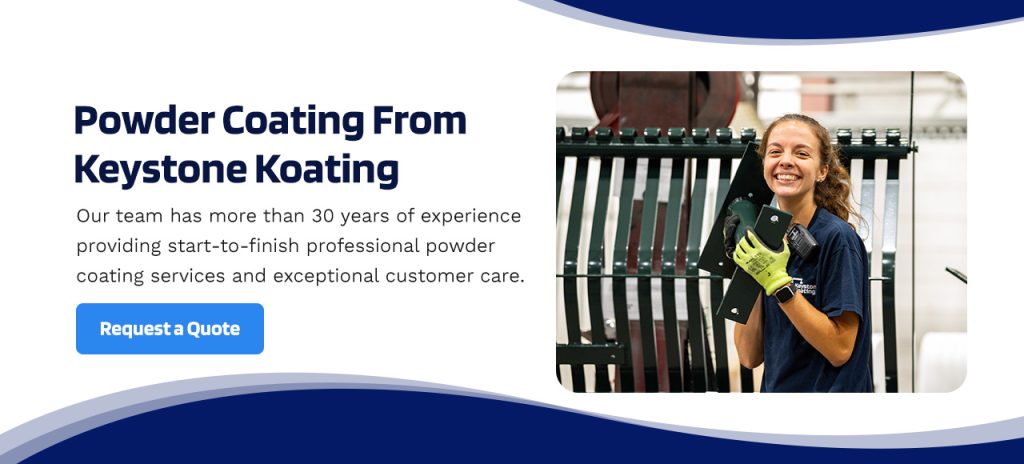
Updated March 15, 2024
Powder coating is a modern finishing technique used with metal and a few other materials. Powder coats come in many different textures, and all are durable and resistant to water, chemicals, abrasion and weather. Many manufacturers also prefer powder coating because it’s more environmentally friendly and more cost-effective than liquid coatings.
As a general rule, anything that can hold an electrostatic charge and withstand the heat of the curing oven is a candidate for powder coating. Most curing ovens run at about 400 degrees Fahrenheit, so whatever goes into that oven needs to have a melting or burning point higher than that. Consequently, not all metals can be powder coated, and many other materials receive more benefits from alternative or no coatings.
Materials That Can’t Be Powder Coated
Powder coating may not work well with non-metallic materials — and if it does, there are specialized requirements that make alternative finish options more appropriate.

Wood
Wood is not an ideal candidate for powder coating. For starters, raw and porous wood cannot withstand high curing oven temperatures and doesn’t naturally conduct electricity.
However, with recent advancements in powder coating technologies and processes, some types of wood can be powder coated. Unlike metals, wood has some unique requirements before it can be powder coated. For example, medium-density fiberboard (MDF) is the industry standard for powder coated wood because it has electrostatic properties.
Additionally, since powder coating is an electrostatic application process, it requires the coated material to conduct electricity before the powder can adhere to the material surface. Wood isn’t a naturally conductive material, but the moisture in wood can have conductive properties. So, in order for powder coating to be effectively applied to a wood surface, the wood needs to have a moisture level of around 5-7%. Keystone Koating is in the process of learning best practices for powder coating wood, and will likely offer this option in the future.
Plastic
Except for high-temp plastics like polysulfone, polyetherimide and polyphenylene plastic, most plastics have melting points well below the temperature required for curing. However, some powder coating facilities offer ultraviolet (UV) curing or specific powder coatings that cure at much lower temperatures to work around the temperature issue. Powder coating plastic may be necessary to give products an aesthetic finish or prevent chipping, cracking and discoloration.
With this in mind, while you can powder coat plastic, it requires specific materials and techniques. Plus, this material and finish combination may not provide enough benefits to justify the extra cost.
Glass
Glass in its original form is not suitable for powder coating because it may melt at high temperatures and doesn’t have the electrical conductivity required. Special materials and techniques are needed to powder coat glass for applications like light fixtures, mirrors and decorative panels. For example, in these unique cases, glass can be pre-treated to help the powder adhere better, or the glass can be attached to a material to boost its electrical conductivity.
Top Materials for Powder Coating
Powder coating is mostly used on metals because they conduct electrical charge. Powder coatings are electrostatically charged, which enables them to attach to charged surfaces without running. Additionally, metals can withstand high temperatures used during the curing process to form hard surface coatings without unsightly beadings and bumps.
The following are some materials you can powder coat.
Aluminum
Aluminum is a great candidate for powder coating. It begins to anneal — or soften — around 650 degrees Fahrenheit so it can withstand the curing oven’s heat. Powder coatings also attach well to aluminum because it’s more porous than most metals. Powder coats benefit aluminum products because they provide added durability, corrosion resistance and various finishes.
At the same time, it can be tricky to powder coat aluminum because the surface needs the correct preparations for successful, long-lasting adhesion. For example, the metal oxidizes quickly and the aluminum oxide must be entirely removed for the powder coating to adhere correctly. Preparing aluminum for powder coating typically involves extra washes and rinses to allow for seamless binding of the powder coat.
Steel
Steel is one of the most commonly powder coated materials because of its strength, high melting temperature and how well it conducts an electrostatic charge. Powder coating steel makes it less susceptible to natural and manufactured elements, such as chemicals, moisture and salt. It also protects steel alloys from damage in the form of bubbling, cracking, peeling and chipping. Powder coats work with most steel alloys, including:
-
- Carbon steel: Powder coating helps prevent corrosion in carbon steel, but it works best when applied on top of a zinc-rich primer coat.
- Stainless steel: A powder coat acts as an attractive layer of protection that enhances stainless steel’s durability and prevents wear and tear.
- Mild steel: This type of steel benefits from powder coating by achieving higher levels of corrosion resistance.
Iron
Powder coating iron products provides them with a durable finish that’s less susceptible to wear and corrosion compared to unfinished products made of iron. A powder coat can be added to cast iron and wrought iron to ensure they last longer, protecting these products from the elements and potential damage. Iron products of any shape and size can be powder coated if the surface is prepared and pretreated to allow for the formation of strong bonds.
Zinc
A variety of zinc products can be powder coated to improve their resistance to wear, corrosion, water, impact and weather. Zinc alloys provide an adhesive base for a clean, attractive and durable powder coating finish. Powder coating zinc is a cost-effective alternative to zinc plating that provides a uniform and more attractive finish while using less material and labor.
Professional surface preparation involving abrasive blasting, primer application and precision curing is necessary to prevent issues with adhesion and formation of pinholes.
Powder Coating From Keystone Koating
At Keystone Koating, we focus primarily on providing top-quality coatings for metal substrate materials like aluminum, iron, steel and zinc. These materials are the most affordable options for powder coating and often benefit the most from their protective coatings.
Our team has more than 30 years of experience providing start-to-finish professional powder coating services and exceptional customer care. We’ve developed a thorough, eight-stage pre-treatment process that allows us to achieve excellent adhesion, and ensure long-term success from our coatings. Contact Keystone Koating to find out more about our processes and services or request a quote for your next project.


